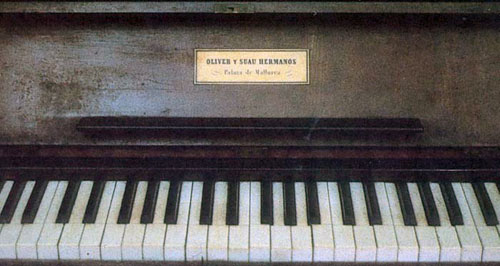
Mallorca always had an infatuation with famous people. Be that the Spanish Royal family, the British Princess Diana, filmstars Michael Douglas, Catherine Zeta-Jones, Goldie Hawn, Danny DeVito, or even longer ago, Frédéric Chopin and George Sand. As long as they all are rich and famous.
I told you about Amandine Aurore Dudevant, aka George Sand, on an earlier occasion on this very blog (see August 3rd). She came to Mallorca in 1838, accompanying Frédéric Chopin, the Polish composer and pianist.
Born near Warsaw in 1810, the son of a French émigré and a Polish mother, Frédéric François Chopin won early fame in the relatively limited circles of his native country, before seeking his fortune abroad, in Paris.
Chopin began to play the piano with verve at the age of 5, taught by his older sister Ludwika. His talent was immediately apparent, and the services of a piano teacher were soon enlisted in order to support his practice. Chopin was a highly dedicated student. It is even said that at the early age of 7 he slept, by his own free will, with wine-corks between his fingers in order to achieve a wider grip. He knew his destiny.
After the studies, Chopin went to Vienna, where he was recognized as a decent pianist with some nicely written compositions, but altogether, it was not the success he had hoped for. Thus, he went back to Warsaw and, later, set his course for Paris. In Paris, Chopin did not immediately achieve success. It took a couple of hard years of composing and performing before he had worked himself into the High Society where he gave lessons to Royals and received the highest appreciation for his compositions. Chopin quickly became famous not only as a composer or teacher but also as a pianist.
Chopin was never to return to Poland again and made very few trips outside of France, mainly because of his weak health. The most famous of his trips may be a disastrous one to Mallorca which nearly cost him his life and another one, to Scotland, which was equally bad for his health.
Chopin was diagnosed with Tuberculosis early in his life and it is quite surprising that he even reached the age of 39 before the illness finally took his life, after about 15 years of struggle. At this young age, Chopin had composed an amazing amount of works from a wide range of piano genres.

In 1836, at a party hosted by Countess Marie d’Agoult, the mistress of fellow-composer Franz Liszt, Chopin was introduced to George Sand, who had been granted a divorce one year earlier from a marriage of convenience. She fell in love with him and offered to become his mistress. Chopin, however, did not find her attractive at first. “Something about her repels me”, he told his family. But George Sand had strong feelings for Chopin and pursued him until a relationship developed.
Chopin was already in poor health at the time, which is why he took his physician’s advice to leave Paris and go for a milder climate during the winter, in the Mediterranean.
In the autumn of 1838, Chopin set off with George Sand and her two children, to spend the winter on the island of Mallorca. They arrived on November 8th, 1838, in Palma de Mallorca by boat from Barcelona. They rented a simple villa and were apparently quite happy. On November 15th, Chopin wrote a letter to a friend, saying “I am in Palma (…) I am close to that which is most beautiful”.
When the sunny weather broke, however, Chopin became ill. On December 3rd, Chopin wrote a letter to the same friend, saying “I have been ill for the last two days like a dog”.
When rumours of Chopin’s suspected tuberculosis reached the villa owner, they were ordered out and could only find accommodations in the Real Cartuja de Valldemossa (Real meaning Royal), a Carthusian monastery from 1399 until 1835, but now defunct, in the then rather remote village of Valldemossa. They stayed there from December 28th, 1838, to February 11th, 1839, when they left Valldemossa, Chopin being seriously ill.
He had been ill-advised to come to Mallorca. Even though temperatures here rarely drop very low, there is a sometimes quite unpleasant humidity in the air in Mallorca, rain or no rain, which can be uncomfortable and extremely damp in the winter. Not so healthy for someone with a tuberculum problem. Anyway, the hapless party left the island on February 13th, by boat from Palma de Mallorca, heading for Barcelona on their way back to Genoa and, eventually, France.
Although his health improved, Chopin never completely recovered from this bout. He complained, with his habitual wit, about the incompetence of the medicos in Mallorca: “The first (doctor) said I was going to die; the second said I had breathed my last; and the third said I was already dead”.
Chopin convalesced during the summer of 1839, in Nohant, George Sand’s manor house, 300 km from Paris.

In 1845, as a further deterioration occurred in Chopin’s health, a serious problem also emerged in his relations with George Sand. The affair was further soured in 1846 by problems involving Sand’s daughter Solange. This was the year when Sand published her book Lucrezia Floriani, whose two main characters – a rich actress and a prince in frail health – might be interpreted as Sand and Chopin; the story was in fact somewhat derogatory to the composer. In 1847 the family problems finally brought the relations between the two to an end, which had lasted for ten years. Chopin died later that same year.
Although Mallorca has treated its guests, Chopin and spouse, not in a very commendable way, as one can easily read in George Sand’s travel memoirs of A Winter in Mallorca, published in 1842, Mallorca has since made the most of the couple’s stay in Valldemossa. One could quite rightly say, that Mallorca’s most famous tourist attraction, after Palma’s Cathedral, for those visitors that do not come only for sun, sea, sex and sangria, is Chopin and Sand’s legendary 45 days stay at the Carthusian monastery. Today, the Claustro houses a Chopin Museum, mainly for the purpose of celebrating the composer’s visit.
Two of the pianos that Chopin played in Mallorca are exhibited there, including the one which he had shipped over all the way from Paris.
During the tourist season, short piano recitals are offered to visitors at the Valldemossa Cartuja, four times a day. A real treat, every time, even if only for a brief duration. In August every summer, Mallorca celebrates the annual Chopin Festival of Music, the Festivals Chopin de Valldemossa, with its 27th edition just concluded.
If you ever have a chance, come for yourself one day and see how Mallorca treats you.

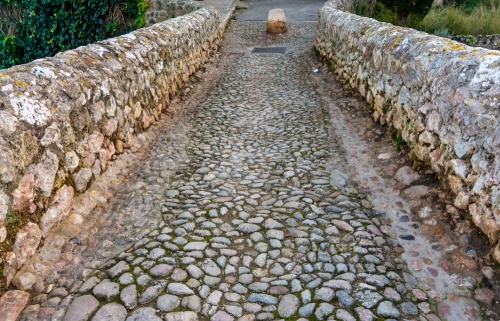





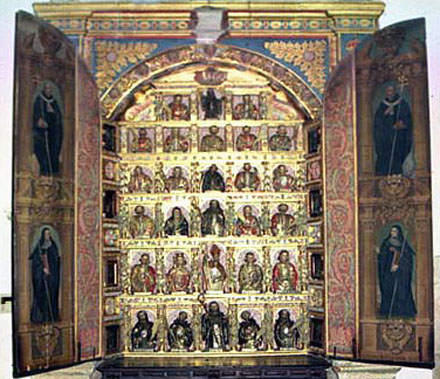






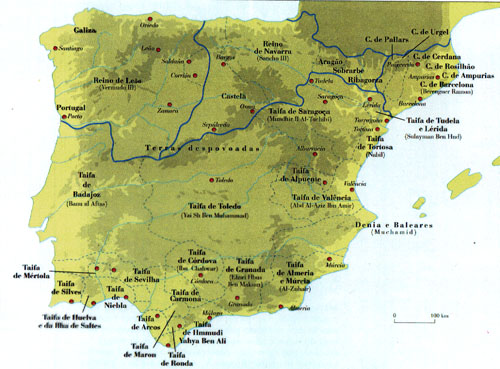



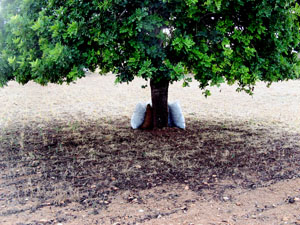


You must be logged in to post a comment.